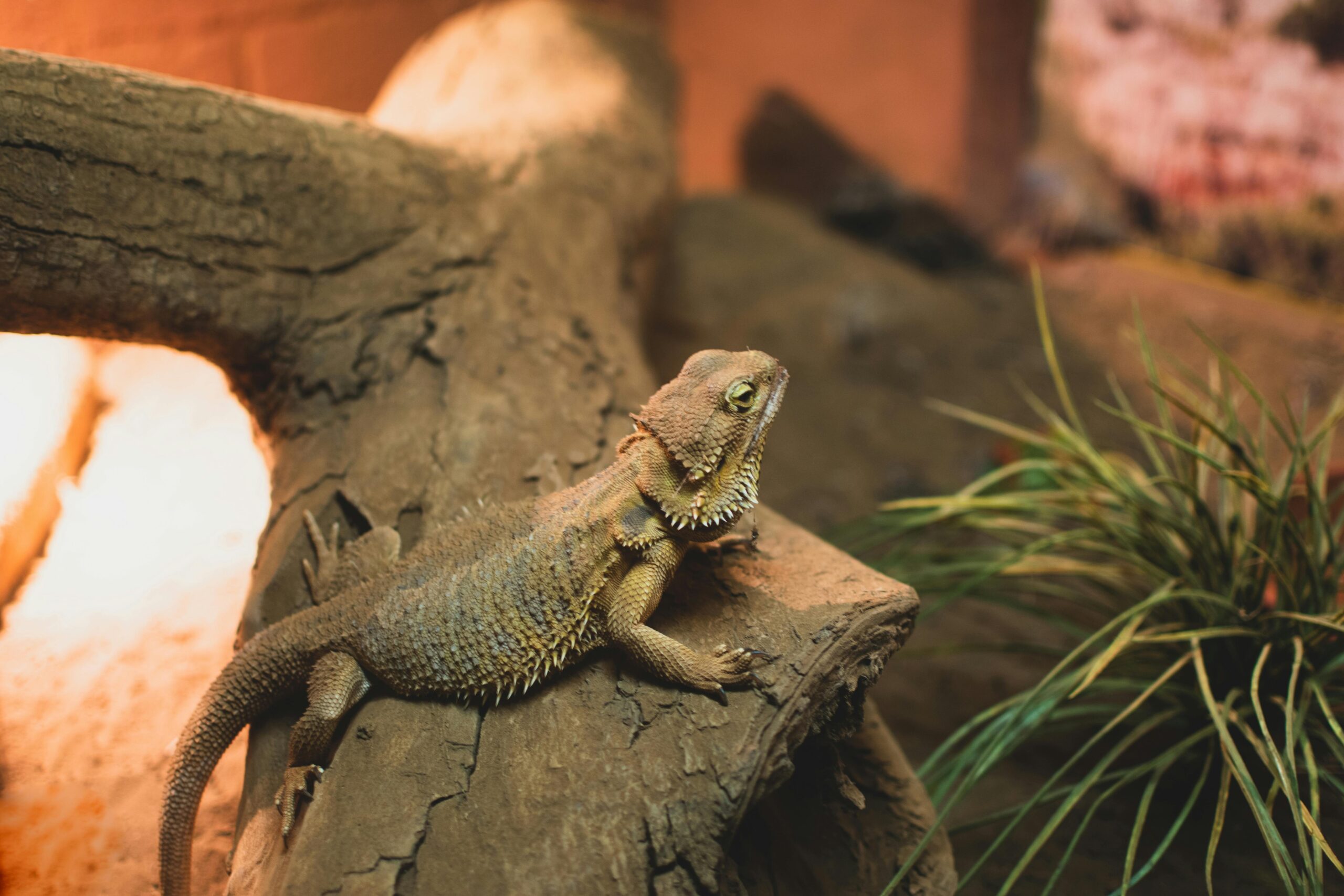
Summary
The ball python (Python regius), also called the royal python, is a nonvenomous constrictor native to grasslands, shrublands, and open forests of West and Central Africa. It is the smallest of the African pythons, typically reaching a maximum length of about 1.8 m (6 ft) and displaying a pattern of light brown or gold blotches on a darker background. Named for its tendency to curl into a tight ball when threatened, this snake’s defensive posture makes it both memorable and relatively easy to handle. Ball pythons are among the most popular pet snakes due to their generally docile temperament and manageable size, though they require a habitat with carefully regulated temperature and humidity to thrive.
Enclosure and Habitat
Size and Layout
Ball pythons require a minimum enclosure of 48 L × 24 W × 24 H inches (120 gallon) to ensure adequate thermoregulation and movement. Providing only one snake per enclosure is recommended to prevent stress and competition.
Hides and Décor
Include at least two hides—one on the warm side and one on the cool side—to allow the snake to thermoregulate and feel secure. Environmental enrichment such as cork logs, sturdy branches, and artificial or live plants encourages natural behaviors and exercise.
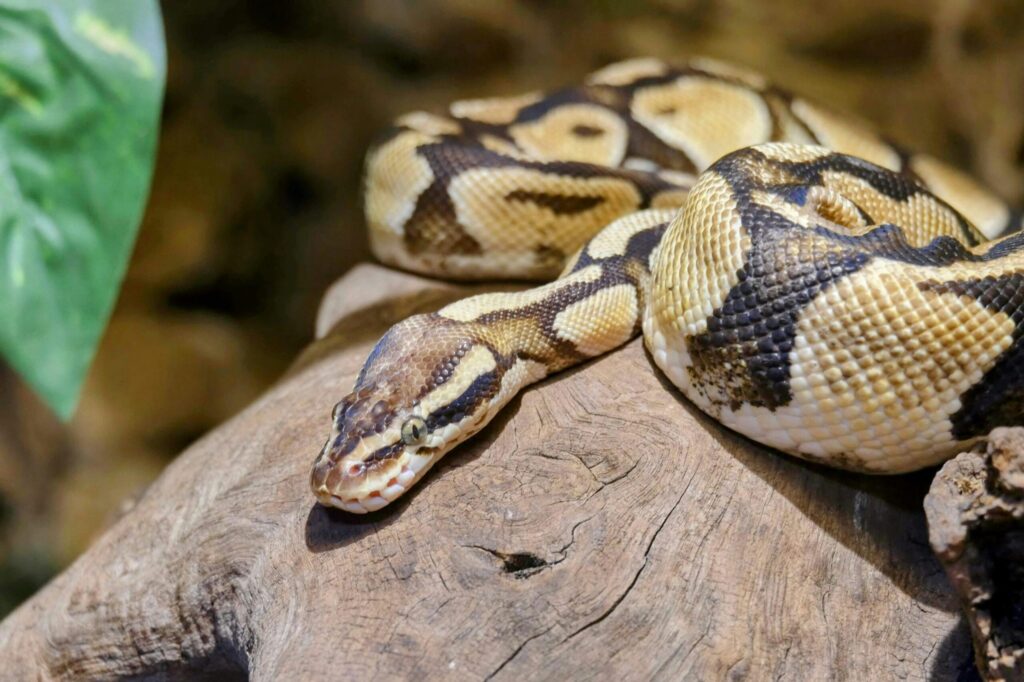
Heating and Lighting
Thermal Gradient
- Basking surface: 95–104 °F (35–40 °C)
- Warm hide: 86–90 °F (30–32 °C)
- Cool hide: 72–80 °F (22–27 °C)
- Nighttime: 72–78 °F (22–26 °C)
Use a 90 W PAR38 halogen flood bulb over a slate tile or basking rock, with a thermostat-regulated heat mat under the warm hide as needed. Infrared thermometers measure surface temperatures, while digital probe thermometers monitor hide temperatures.
UVB Lighting
Although not strictly required, a 22″ T5 HO Zoo Med Reptisun 5.0 or Arcadia Forest 6% UVB bulb mounted 9–18 inches above the basking area (depending on mesh obstruction) promotes optimal welfare.
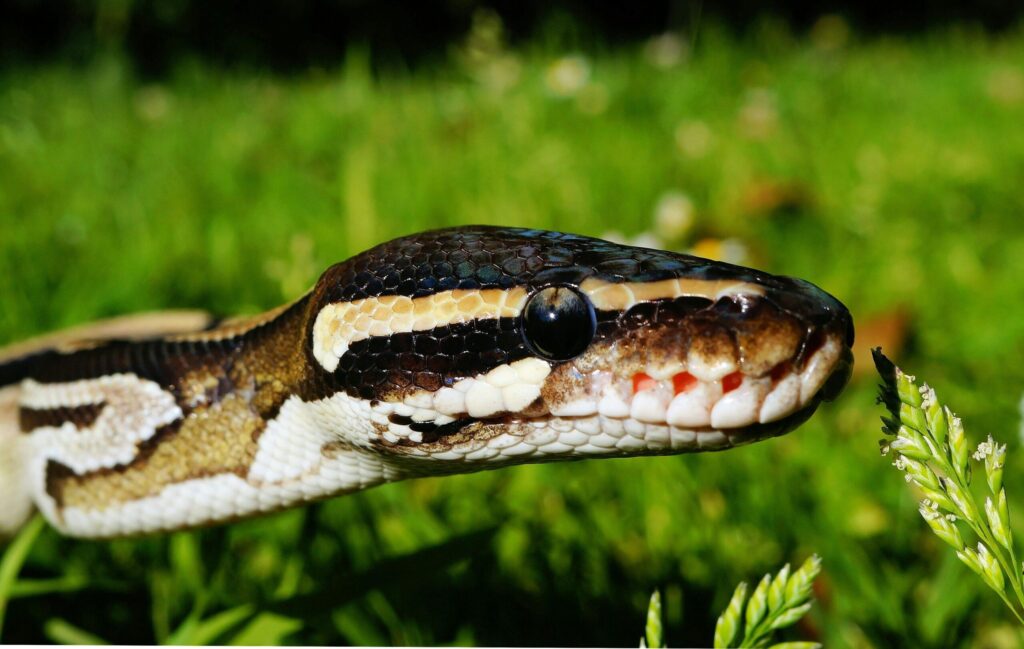
Humidity
Maintain relative humidity between 45–75 %, measured by placing a hygrometer probe inside the cool hide (where humidity should be highest). Mist the enclosure twice daily with a pressure sprayer, add moistened sphagnum moss inside the hide, and use leaf litter atop the substrate to help retain moisture.
Substrate
A naturalistic, moisture‑retentive substrate (e.g., Zoo Med ReptiSoil, Exo Terra Plantation Soil, or a DIY mix of 40 % topsoil + 40 % ReptiSoil + 20 % play sand) should be provided at a depth of 2–4 inches. Spot‑clean feces and urates daily, replace soiled substrate immediately, and perform a complete substrate change every 3–4 months.

Diet and Feeding
- Frequency
- Hatchlings (up to 5 weeks): every 5 days
- Juveniles < 200 g: every 7 days
- Juveniles 200–350 g: every 7–10 days
- Juveniles 350–500 g: every 10–14 days
- Subadults/adults 500–1500 g: every 14–21 days
- Adults > 1500 g: every 28–56 days
- Prey Size & Variety
Offer prey totaling about 10 % of the snake’s weight, with individual items no larger than 1.5 times the snake’s width at its widest point. Include rats, mice, African soft‑furred rats, quail, and chicks for nutritional variety. - Preparation & Supplements
Thaw frozen prey in a bag immersed in warm water (100 °F/38 °C), and use soft‑tipped feeding tongs to minimize handling risk. Occasionally dust prey lightly with a 50/50 calcium–multivitamin mix (e.g., Arcadia EarthPro‑A or Repashy CalciumPlus LoD).
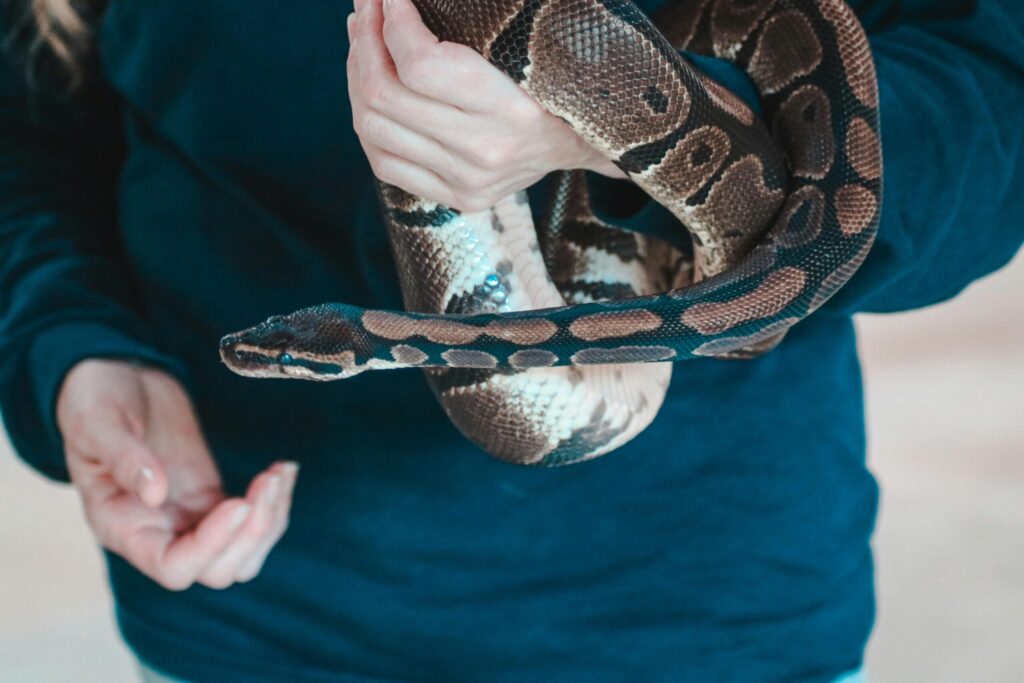
Veterinary Care
- Initial Exam: Within one week of acquisition, include weight assessment, oral examination, and fecal parasite screen.
- Routine Exams: Complete physical exam every 6–12 months, annual fecal analysis for parasites, and yearly blood work (CBC and biochemistry).
- Diagnostic Testing: May include microbiological testing (Gram stains, cultures), skin scrapings for mites, and radiographs to evaluate organ health.
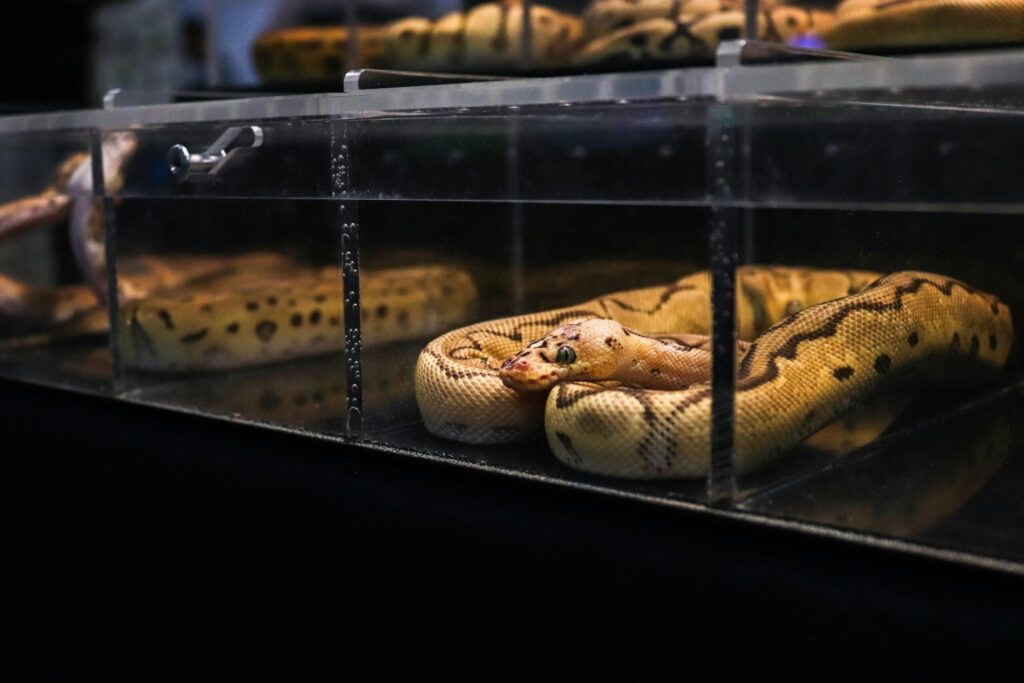
Common Health Issues & Mitigation
1. Infectious Stomatitis (Mouth Rot)
Signs: hemorrhagic gums, thick mucus or pus, foul odor. Often secondary to stress or poor hygiene.
Mitigation: Immediate veterinary treatment with injectable antibiotics, debridement of necrotic tissue, and twice‑daily mouth rinses with antibiotic solution; disinfect enclosure thoroughly.
2. Respiratory Infections
Signs: wheezing, clicking, mucus bubbles at nostrils/mouth, lethargy, anorexia. Caused by inadequate temperatures, low humidity, or contaminated habitat.
Mitigation: Correct husbandry errors (optimize thermal gradient and humidity), perform veterinary‑prescribed antibiotic therapy, and maintain strict enclosure hygiene.
3. Scale Rot
Signs: raw, ulcerative lesions on ventral scales, often with secondary bacterial infection. Linked to dirty enclosure and excessively damp or abrasive substrates.
Mitigation: Switch to a cleaner substrate, maintain dry hide areas, clean enclosure promptly after soiling, and apply topical antibacterial ointment under veterinary guidance.
4. Parasites (Internal & External)
Internal: coccidia, nematodes; signs include weight loss, diarrhea.
External: mites and ticks; signs include visible crawling mites, skin irritation.
Mitigation: Annual fecal exams with professional parasite identification, targeted anthelmintic treatment, and thorough disinfection/quarantine of new or infested animals.
5. Inclusion Body Disease (IBD)
Signs: regurgitation, weight loss, head tremors, neurological signs (stargazing, corkscrewing), abnormal shedding. Transmitted via bodily fluids or mites.
Mitigation: No cure; strictly quarantine or euthanize affected individuals, maintain impeccable hygiene, and isolate new additions for ≥ 90 days.
By adhering to these husbandry guidelines and remaining vigilant for early signs of disease, you can ensure your ball python remains healthy and thrives in captivity.
Sources:
- Ball Python (Python Regius), reptifiles.com/wp-content/uploads/2020/11/Ball-Python-Care-Sheet-PDF-1.pdf. Accessed 22 Apr. 2025.
- “Owning a Pet Snake: VCA Animal Hospitals.” Vca, vcahospitals.com/know-your-pet/snakes-owning. Accessed 22 Apr. 2025.
- “Common Diseases of Pet Snakes: VCA Animal Hospitals.” Vca, vcahospitals.com/know-your-pet/snakes-diseases. Accessed 22 Apr. 2025.
